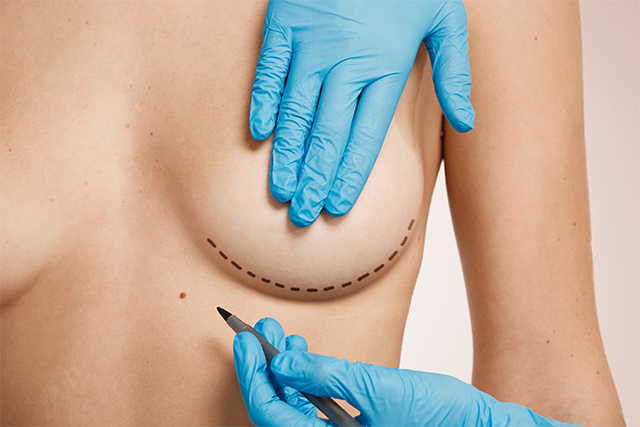While modern breast implants are designed to last at least 10 years or more before they need replacement, there are instances where you might need an earlier breast implant revision. The need for earlier revisions can be personal, due to complications, or simply changes in the appearance of your breasts due to aging or life changes, such as pregnancy. Here we look at five of the top signs that you might be a good candidate for an early breast implant revision.

-
Breast Implant Rupture
Breast implant ruptures can occur with a traumatic injury, such as a car accident, or can occur through age or weakening of the implant shell. If you have saline implants, a rupture will be noticeable as the body will absorb the saline and your breast will appear deflated. Silicone implant ruptures, however, can be a bit more challenging to notice and are often found during your routine MRIs because the silicone within the implant, particularly in “gummy bear” type implants, remains in place.
-
Capsular Contracture
The formation of scar tissue after a breast augmentation is normal and, in fact, this scar tissue actually helps support the location of the breast implants. However, in some cases, the body sees the implants as a dangerous substance and creates excessive amounts of scar tissue in an effort to seal the foreign object from the rest of the body. This overproduction of dense, hard tissue can affect changes in the appearance of the implants, the feel of the implants and breasts, and, in some cases, cause severe pain.
-
Pain or Discomfort in the Breasts
While capsular contracture is the most common cause of breast implant pain or discomfort, other issues, such as pinched nerves, poor implant placement, or damaged lymph nodes can contribute to pain or discomfort. In other cases, choosing too large of an implant may result in discomfort or disruption in daily activities.
-
Your Implants Are Moving, Rotating, or Bottoming Out
Movement or settling is normal with the placement of implants, however, significant movement and rotation are not normal and can greatly affect the appearance of the breasts. This movement can occur due to implant pockets that are too large, an overly large implant that rotates, or your natural skin being unable to support the implant, leading to a condition known as bottoming out. When bottoming out occurs the implants fall to a sagging appearance, however, the nipple often moves upward, resulting in an undesired appearance.
-
You Are Unhappy with the Size or Appearance
In many cases, a woman may choose a breast implant revision simply because she is unhappy with the results or how they have changed over time. You may have opted for large implants only to learn that they do not fit well with your lifestyle. Maybe you were conservative and went with smaller implants but would now like to go larger.
Whether it is for medical reasons, discomfort, or unhappiness with the appearance, many women opt for a breast implant revision. You and your surgeon can better determine which type and size implants will best help you meet your goals.
